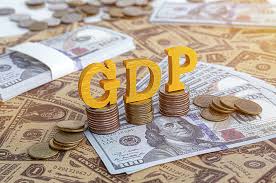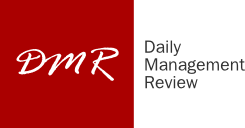
U.S. business activity showed a notable slowdown in June as firms grappled with a convergence of cost pressures, supply chain adjustments and shifting demand patterns. While the economy continued to expand modestly—with composite PMI readings remaining above the 50-point growth threshold—several underlying factors point to a waning momentum that could extend into the second half of the year. Chief among these are rising input costs fueled by tariffs and energy price volatility, inventory realignments following front-loaded orders, and a more cautious consumer backdrop influenced by higher borrowing costs.
Inflation and Tariff-Driven Cost Pressures
Businesses across manufacturing and services sectors have reported elevated input prices driven largely by import duties on a broad range of raw materials and intermediate goods. Manufacturers in particular have felt the pinch of tariffs on steel, aluminum and electronics components, with nearly two-thirds of respondents in recent surveys attributing higher costs directly to U.S. trade levies. As these duties filter through the production chain, firms have begun to pass along price increases to customers, with the gauge of selling prices in some segments rising to levels not seen since mid-2022. Concurrently, volatility in global energy markets—exacerbated by geopolitical tensions in the Middle East—has pushed gasoline and natural gas prices higher, further eroding corporate margins and weighing on consumer spending power.
Following a period of “front-loading” in anticipation of tariff hikes, many companies have drawn down stockpiles, leading to a flattening or outright decline in new orders. The resulting inventory correction has been particularly pronounced in industries that rely on semiconductor chips and specialized components, where lead times had stretched to multi-year highs during earlier supply-shock phases. Moreover, lingering logistical bottlenecks at major ports and intermodal hubs have forced firms to rethink just-in-time delivery models, opting instead for more flexible, albeit costlier, alternatives. While these adjustments are intended to insulate businesses from future disruptions, they have contributed to a softening in overall production growth as firms fine-tune inventory levels to more sustainable norms.
Monetary Policy and Consumer Demand Shifts
The Federal Reserve’s decision to maintain benchmark interest rates in the 4.25%–4.50% range has tempered investment plans and dampened housing market activity. Mortgage rates near four-and-a-half percent have sidelined many prospective homebuyers, pushing existing sales to their slowest pace for a May month since 2009. Higher financing costs have rippled through corporate borrowing, causing some firms to delay capital expenditures and scale back expansion projects. On the demand side, consumers facing elevated credit card rates and student loan repayments have grown more cautious, with retail sales growth decelerating and services spending—especially in discretionary sectors like travel and dining—showing signs of plateauing.
Although job creation remains positive, a tight labor market has elevated wage pressures, particularly in healthcare, logistics and technology services. Many businesses report difficulty filling skilled positions, prompting them to raise wages and invest in training programs. While higher pay supports household incomes, it also contributes to sustained cost growth that firms must absorb or transfer downstream. This dynamic has created a feedback loop: wage gains bolster consumer purchasing power but also fuel inflation, which in turn prompts companies to reconsider staffing plans and hiring timelines.
Slowing growth in key export markets—especially Europe and parts of Asia—has trimmed overseas orders, reducing the growth contribution from U.S. manufacturing outlets. Trade tensions with major partners have introduced an additional layer of unpredictability, with companies unsure how reciprocal tariff measures or regulatory changes might affect future revenue streams. Recent data show that exports of capital goods and consumer electronics have softened, reflecting both weaker global demand and efforts by multinational firms to diversify production away from regions facing punitive duties.
Technological Investments and Automation Trends
In response to rising labor costs and supply chain vulnerabilities, many firms are accelerating investments in automation and digital technologies. While this shift promises long-term productivity gains, the near-term impact involves significant capital outlays and potential disruptions as companies retrofit existing facilities. Adoption of robotics, artificial intelligence for demand forecasting and blockchain for supply-chain transparency has intensified, but the transition phase has weighed on operating margins and contributed to a more cautious stance on hiring and spending.
Not all industries have experienced the slowdown uniformly. The construction sector, still grappling with elevated material costs and permitting delays, reported some of the weakest expansions in recent months. In contrast, pockets of strength persisted in sectors such as pharmaceuticals and renewable energy, where backlog orders and government incentives provided a buffer against broader downturns. Geographically, manufacturing hubs in the Midwest saw more pronounced contractions in new order intakes, while service-oriented regions along the coasts maintained moderate growth, supported by robust tech-sector demand and tourism rebound.
CEO confidence surveys reveal growing wariness, with executives citing policy uncertainty and potential geopolitical flashpoints as top risks. Many business leaders expect headline inflation to remain above the Federal Reserve’s 2% target through year-end, and only about one-in-five anticipate a return to faster growth before mid-2026. Firms are increasingly prioritizing balance-sheet resilience, shoring up cash reserves and renegotiating supplier contracts to enhance flexibility. A minority have begun exploring alternative markets in Latin America and Africa to hedge against U.S.-China trade frictions.
Policy Implications and Potential Interventions
The moderation in business activity raises questions about the appropriate policy response. Some economists argue for a recalibration of tariff regimes to ease cost pressures, while others emphasize the need for more targeted fiscal support for sectors facing structural headwinds. The Federal Reserve, keeping a watchful eye on inflation indicators, has signaled that rate cuts could resume if incoming data confirm a sustained moderation in price growth. Meanwhile, Congress is debating measures to strengthen domestic semiconductor production and modernize critical infrastructure—initiatives that could bolster long-term competitiveness but carry upfront fiscal costs.
As the second half of the year unfolds, businesses will navigate a landscape shaped by the interplay of inflation, policy shifts and evolving consumer behaviors. Although growth remains positive, the pace has undeniably softened, underscoring the importance of strategic adaptability in an environment where cost shocks and demand fluctuations have become the new normal. With labor shortages, inventory realignments and geopolitical factors all conjoining to temper expansion, U.S. firms face a delicate balancing act between preserving margins and sustaining investment in innovation.
(Source:www.economictimes.com)
Inflation and Tariff-Driven Cost Pressures
Businesses across manufacturing and services sectors have reported elevated input prices driven largely by import duties on a broad range of raw materials and intermediate goods. Manufacturers in particular have felt the pinch of tariffs on steel, aluminum and electronics components, with nearly two-thirds of respondents in recent surveys attributing higher costs directly to U.S. trade levies. As these duties filter through the production chain, firms have begun to pass along price increases to customers, with the gauge of selling prices in some segments rising to levels not seen since mid-2022. Concurrently, volatility in global energy markets—exacerbated by geopolitical tensions in the Middle East—has pushed gasoline and natural gas prices higher, further eroding corporate margins and weighing on consumer spending power.
Following a period of “front-loading” in anticipation of tariff hikes, many companies have drawn down stockpiles, leading to a flattening or outright decline in new orders. The resulting inventory correction has been particularly pronounced in industries that rely on semiconductor chips and specialized components, where lead times had stretched to multi-year highs during earlier supply-shock phases. Moreover, lingering logistical bottlenecks at major ports and intermodal hubs have forced firms to rethink just-in-time delivery models, opting instead for more flexible, albeit costlier, alternatives. While these adjustments are intended to insulate businesses from future disruptions, they have contributed to a softening in overall production growth as firms fine-tune inventory levels to more sustainable norms.
Monetary Policy and Consumer Demand Shifts
The Federal Reserve’s decision to maintain benchmark interest rates in the 4.25%–4.50% range has tempered investment plans and dampened housing market activity. Mortgage rates near four-and-a-half percent have sidelined many prospective homebuyers, pushing existing sales to their slowest pace for a May month since 2009. Higher financing costs have rippled through corporate borrowing, causing some firms to delay capital expenditures and scale back expansion projects. On the demand side, consumers facing elevated credit card rates and student loan repayments have grown more cautious, with retail sales growth decelerating and services spending—especially in discretionary sectors like travel and dining—showing signs of plateauing.
Although job creation remains positive, a tight labor market has elevated wage pressures, particularly in healthcare, logistics and technology services. Many businesses report difficulty filling skilled positions, prompting them to raise wages and invest in training programs. While higher pay supports household incomes, it also contributes to sustained cost growth that firms must absorb or transfer downstream. This dynamic has created a feedback loop: wage gains bolster consumer purchasing power but also fuel inflation, which in turn prompts companies to reconsider staffing plans and hiring timelines.
Slowing growth in key export markets—especially Europe and parts of Asia—has trimmed overseas orders, reducing the growth contribution from U.S. manufacturing outlets. Trade tensions with major partners have introduced an additional layer of unpredictability, with companies unsure how reciprocal tariff measures or regulatory changes might affect future revenue streams. Recent data show that exports of capital goods and consumer electronics have softened, reflecting both weaker global demand and efforts by multinational firms to diversify production away from regions facing punitive duties.
Technological Investments and Automation Trends
In response to rising labor costs and supply chain vulnerabilities, many firms are accelerating investments in automation and digital technologies. While this shift promises long-term productivity gains, the near-term impact involves significant capital outlays and potential disruptions as companies retrofit existing facilities. Adoption of robotics, artificial intelligence for demand forecasting and blockchain for supply-chain transparency has intensified, but the transition phase has weighed on operating margins and contributed to a more cautious stance on hiring and spending.
Not all industries have experienced the slowdown uniformly. The construction sector, still grappling with elevated material costs and permitting delays, reported some of the weakest expansions in recent months. In contrast, pockets of strength persisted in sectors such as pharmaceuticals and renewable energy, where backlog orders and government incentives provided a buffer against broader downturns. Geographically, manufacturing hubs in the Midwest saw more pronounced contractions in new order intakes, while service-oriented regions along the coasts maintained moderate growth, supported by robust tech-sector demand and tourism rebound.
CEO confidence surveys reveal growing wariness, with executives citing policy uncertainty and potential geopolitical flashpoints as top risks. Many business leaders expect headline inflation to remain above the Federal Reserve’s 2% target through year-end, and only about one-in-five anticipate a return to faster growth before mid-2026. Firms are increasingly prioritizing balance-sheet resilience, shoring up cash reserves and renegotiating supplier contracts to enhance flexibility. A minority have begun exploring alternative markets in Latin America and Africa to hedge against U.S.-China trade frictions.
Policy Implications and Potential Interventions
The moderation in business activity raises questions about the appropriate policy response. Some economists argue for a recalibration of tariff regimes to ease cost pressures, while others emphasize the need for more targeted fiscal support for sectors facing structural headwinds. The Federal Reserve, keeping a watchful eye on inflation indicators, has signaled that rate cuts could resume if incoming data confirm a sustained moderation in price growth. Meanwhile, Congress is debating measures to strengthen domestic semiconductor production and modernize critical infrastructure—initiatives that could bolster long-term competitiveness but carry upfront fiscal costs.
As the second half of the year unfolds, businesses will navigate a landscape shaped by the interplay of inflation, policy shifts and evolving consumer behaviors. Although growth remains positive, the pace has undeniably softened, underscoring the importance of strategic adaptability in an environment where cost shocks and demand fluctuations have become the new normal. With labor shortages, inventory realignments and geopolitical factors all conjoining to temper expansion, U.S. firms face a delicate balancing act between preserving margins and sustaining investment in innovation.
(Source:www.economictimes.com)





